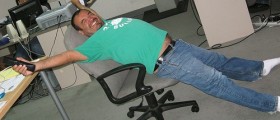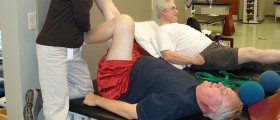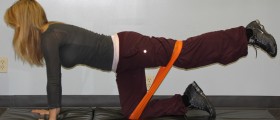
Introduction
Sacroiliac or SI joint is located in the lower back, on the both sides of the spine at the junction with the pelvis. Sacroiliac joint pain, which radiates down towards the buttocks and the back of the thighs, affects twice as much women than men.
This joint plays an important role in movement since it transfers the weight from the upper body to the lower body. Any injury to sacroiliac joint, or an inflammation, cause serious problems with normal daily activities like walking, reaching for something above the head, picking something up from the floor and such.
The treatment for sacroiliac joint pain ranges from exercise to surgery. The problem with surgery is that patients with pain around the area of the SI joint are often told their problem arises from the joint itself, while the real cause is something else, such as sacroiliac ligaments or the surrounding tissue, with is highly innervated. Exercise is today believed to be a much better alternative to surgery.
Exercises for sacroiliac joint pain
Before starting special exercises for sacroiliac joint pain, it is necessary to warm up and neutralize the spine, in order to avoid pelvic misalignment that can make the problem much worse than it already is.
Neutralizing the spine is done while standing, sitting or laying down. While standing, the spine is neutralized by placing the shoulder blades and the buttocks against a wall. In this normal position the lower back makes an arch. The arch should be flattened by pushing the center of the back against the wall. Shoulders should be flat on the ground and the chin should gently be pushed towards the chest.
While lying down on a soft mat with knees bent and feet placed at hip width, an arc should be created by moving the body up and the middle of the back down, with the spine in the normal position. Shoulders should be flat on the ground and the chin should gently be pushed towards the chest.
In a chair, the spine is neutralized by keeping the buttocks pressed at the seat and the end of the spine directly on top of the seat. The collarbone should make a straight line with the hips and the breastbone over the tailbone area.
After the spine is neutralized, the best and the simplest exercises are wall squats. Pelvic clock is another great exercise for sacroiliac joint pain. It is done on the floor, with a neutral spine, imagining a clock on which 3 o’clock and 9 o’clock are hips, 6 o’clock is the tailbone and the navel is 12 o’clock. The knees should be bent and kept immobile while the pelvis makes clockwise circles.

















Your thoughts on this
Loading...